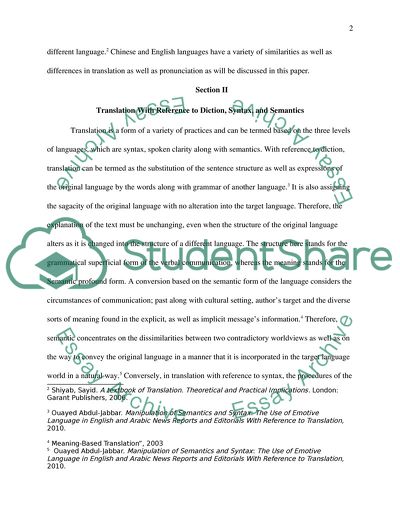Cite this document
(Similarities and Differences between English and Chinese With Research Paper, n.d.)
Similarities and Differences between English and Chinese With Research Paper. Retrieved from https://studentshare.org/humanitarian/1759082-from-perspectives-of-grammer-and-culture-critically-discuss-similarities-and-differences-between-english-and-chinese-with-reference-to-translation
Similarities and Differences between English and Chinese With Research Paper. Retrieved from https://studentshare.org/humanitarian/1759082-from-perspectives-of-grammer-and-culture-critically-discuss-similarities-and-differences-between-english-and-chinese-with-reference-to-translation
(Similarities and Differences Between English and Chinese With Research Paper)
Similarities and Differences Between English and Chinese With Research Paper. https://studentshare.org/humanitarian/1759082-from-perspectives-of-grammer-and-culture-critically-discuss-similarities-and-differences-between-english-and-chinese-with-reference-to-translation.
Similarities and Differences Between English and Chinese With Research Paper. https://studentshare.org/humanitarian/1759082-from-perspectives-of-grammer-and-culture-critically-discuss-similarities-and-differences-between-english-and-chinese-with-reference-to-translation.
“Similarities and Differences Between English and Chinese With Research Paper”, n.d. https://studentshare.org/humanitarian/1759082-from-perspectives-of-grammer-and-culture-critically-discuss-similarities-and-differences-between-english-and-chinese-with-reference-to-translation.


